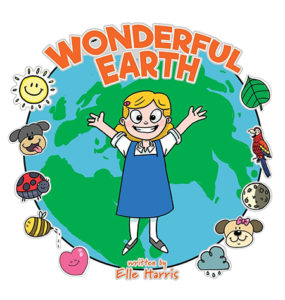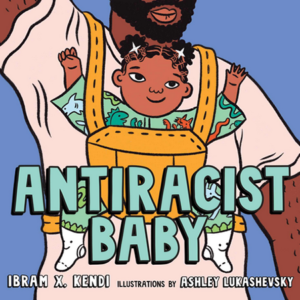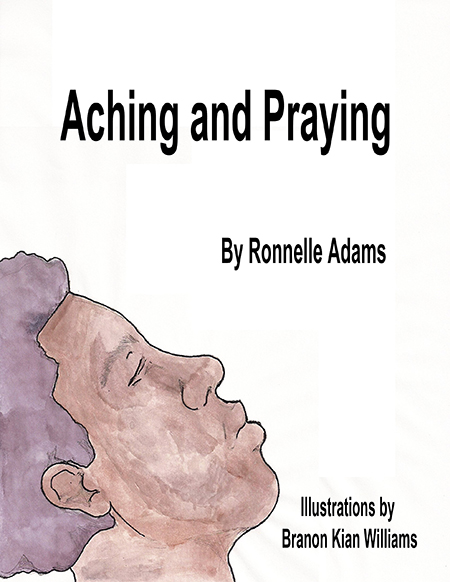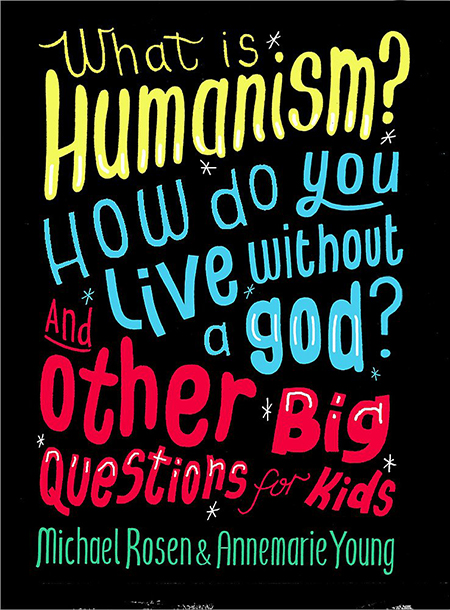Humanist EDge: Celebrating Summer with Humanist Books for Kids

In July we celebrate Independence Day, as well as national days for blueberries, ice cream, French fries, and more. July also marks the onset of the dog days of summer and it’s National Anti-Boredom month. To help ward off the mid-summer doldrums, the American Humanist Association’s Center for Education recommends some terrific humanist reads to keep young minds busy.
Two of my favorites are the Annabelle & Aiden series by JR Becker (for readers age four to ten) and the Stardust series by Bailey and Douglas Harris (age five to ten). We surveyed these in a Humanist EDge column last year, “Three New Books Make Evolution Fun For Kids,” and I’m pleased to highlight them and further offerings here.
 Following her sister Bailey’s footsteps, nine-year-old Elle Harris writes specifically about humanist ideas and ethics. Her book Wonderful Earth takes us on a journey looking at the beautiful parts of our planet, from honeybees to family and friends, through the eyes of a young girl. Her second book, Elle the Humanist, delightfully focuses on a fundamental value for humanity and humanists—empathy. The so-called platinum rule is a new twist on the golden that teaches children tolerance and understanding of each other’s differences, something much needed in today’s society.
Following her sister Bailey’s footsteps, nine-year-old Elle Harris writes specifically about humanist ideas and ethics. Her book Wonderful Earth takes us on a journey looking at the beautiful parts of our planet, from honeybees to family and friends, through the eyes of a young girl. Her second book, Elle the Humanist, delightfully focuses on a fundamental value for humanity and humanists—empathy. The so-called platinum rule is a new twist on the golden that teaches children tolerance and understanding of each other’s differences, something much needed in today’s society.
(The AHA Center for Education will host a “Speaking of Humanism” event on July 30 with Bailey and Elle Harris; learn more about their experiences growing up in a secular family in a highly religious area of the county, how they came to be writers, and what inspired them at such a young age to advocate for humanism and science.)
 On a different note, Antiracist Baby, written by Ibram X. Kendi and illustrated by Ashley Lukashevsky, is a powerful new book addressing contemporary perspectives on race. This board book for toddlers brings forward direct conversations needed to combat racism and prejudice at an early age. The Never Without a Book blog rated the book four stars and noted that “Antiracist Baby is a very cute introduction to toddlers about racism. The illustrations are bold and beautiful and the message behind is an important one.” One critic on Goodreads said she had trouble with the book because “it takes more of a humanist approach rather than an actively antiracist one.” I think, however, that Antiracist Baby is more enticing because it adheres to a humanist perspective and it carries a critical message. I highly recommend for any children’s library.
On a different note, Antiracist Baby, written by Ibram X. Kendi and illustrated by Ashley Lukashevsky, is a powerful new book addressing contemporary perspectives on race. This board book for toddlers brings forward direct conversations needed to combat racism and prejudice at an early age. The Never Without a Book blog rated the book four stars and noted that “Antiracist Baby is a very cute introduction to toddlers about racism. The illustrations are bold and beautiful and the message behind is an important one.” One critic on Goodreads said she had trouble with the book because “it takes more of a humanist approach rather than an actively antiracist one.” I think, however, that Antiracist Baby is more enticing because it adheres to a humanist perspective and it carries a critical message. I highly recommend for any children’s library.
 A book that combines both the history of racism and the role religion played in the acculturation of Black Americans is Ronnelle Adams’s Aching and Praying (illustrated by Branon Kian Williams). It tells the story of slavery and how Christian slave owners utilized religion to rob Africans of their cultural identity, holding them in servitude both mentally and physically. As Connor McFilbin writes in his Amazon review of the book,
A book that combines both the history of racism and the role religion played in the acculturation of Black Americans is Ronnelle Adams’s Aching and Praying (illustrated by Branon Kian Williams). It tells the story of slavery and how Christian slave owners utilized religion to rob Africans of their cultural identity, holding them in servitude both mentally and physically. As Connor McFilbin writes in his Amazon review of the book,
Set up as a historical children’s book, the story follows a slave’s journey in questioning the religious doctrines used to keep him and those he loves in bondage. Instead of making excuses for oppression in the name of superstition, Aching and Praying uncompromisingly embraces the notion that religion is, and always has been, a regressive and violent tool used by the powerful against the powerless. However, far from being a wholly dark and negative book Aching and Praying is a story of hope in the face of overwhelming odds, a story where the liberation of thought can lead to the liberation of humanity.
While this book was written with young readers in mind, its message is for all ages. It is an important reminder that the United States was built on the backs of Africans and using Christian principles as justification for slavery and oppression.
The absence of trans-inclusive children’s books motivated Shauna Gordon-McKeon to write the incredible story, Super Princess Saves the Night. The story, with lovely illustrations of Elena Popova, is about tolerance and acceptance of differences. It is an empathic story of parents’ love for their child as a beautiful human being who is a superhero day or night. This book demonstrates caring for others not only in the story but in its very existence—as all proceeds from sales go to the Trans Women of Color Collective.
 An appropriate read for upper primary and lower secondary school children is Michael Rosen and Annemarie Young’s What Is Humanism? How Do You Live without a God? And Other Big Questions for Kids. “This book examines how humanists respond to fundamental questions about morals and ethics, the origins of life, religion, and the state,” Rosen notes. “It looks at how humanists mark the milestones of birth, marriage, and death. How do people without belief in God live moral and fulfilled lives, with respect for humankind and the universe?” Encouraging readers to think about big questions for themselves, the book is a compelling resource with humanist contributors such as Jim Al-Khalili, Camila Batmanghelidjh, Stephen Fry, Natalie Haynes, Shappi Khorsandi, Tim Minchin, and Philip Pullman.
An appropriate read for upper primary and lower secondary school children is Michael Rosen and Annemarie Young’s What Is Humanism? How Do You Live without a God? And Other Big Questions for Kids. “This book examines how humanists respond to fundamental questions about morals and ethics, the origins of life, religion, and the state,” Rosen notes. “It looks at how humanists mark the milestones of birth, marriage, and death. How do people without belief in God live moral and fulfilled lives, with respect for humankind and the universe?” Encouraging readers to think about big questions for themselves, the book is a compelling resource with humanist contributors such as Jim Al-Khalili, Camila Batmanghelidjh, Stephen Fry, Natalie Haynes, Shappi Khorsandi, Tim Minchin, and Philip Pullman.
I hope this short list of books helps ensure July is a “boredom-free” month for any young reader in your life. (Highly recommended: adding ice cream, blueberries, or French fries to the story hour.)
